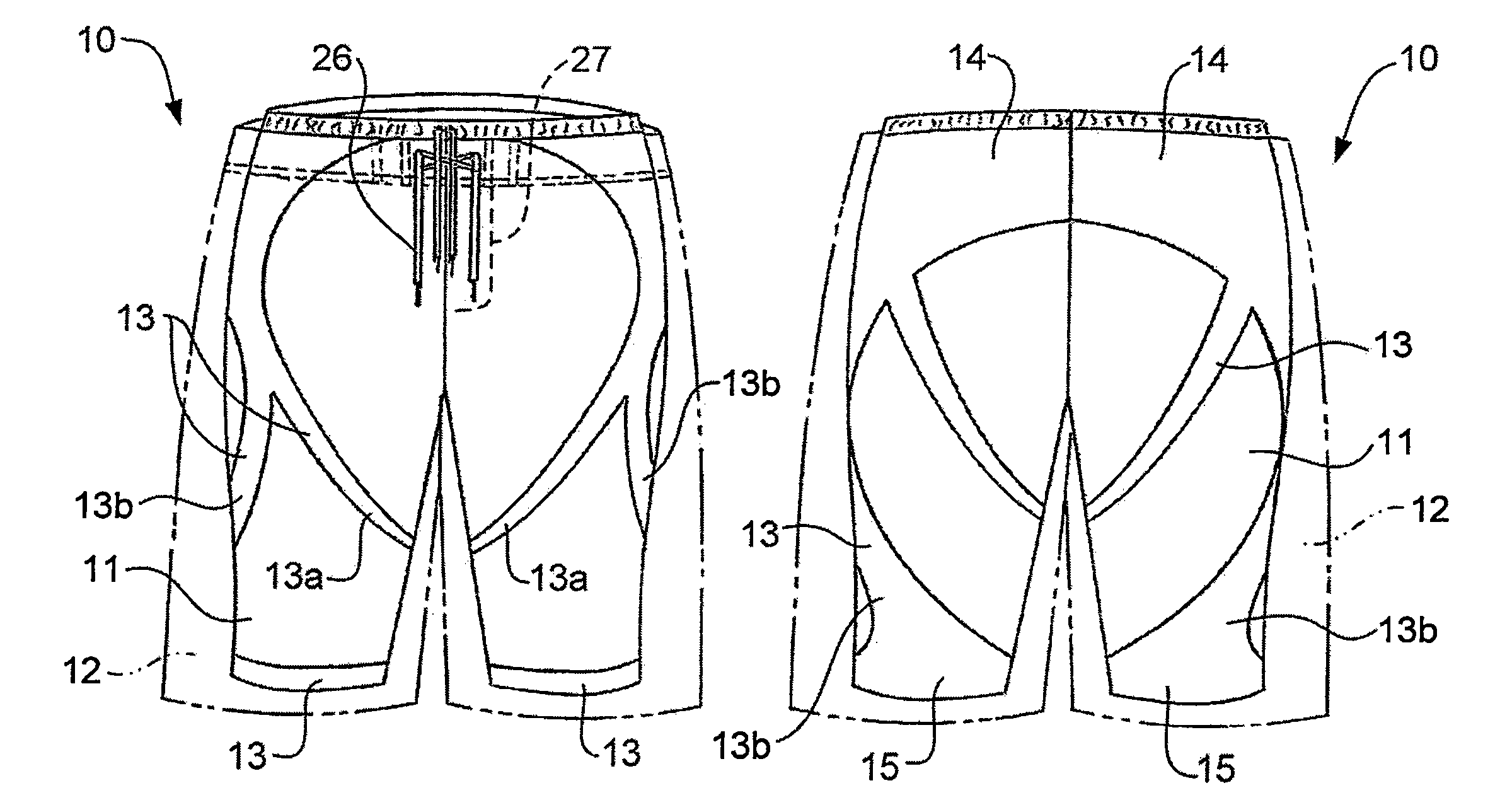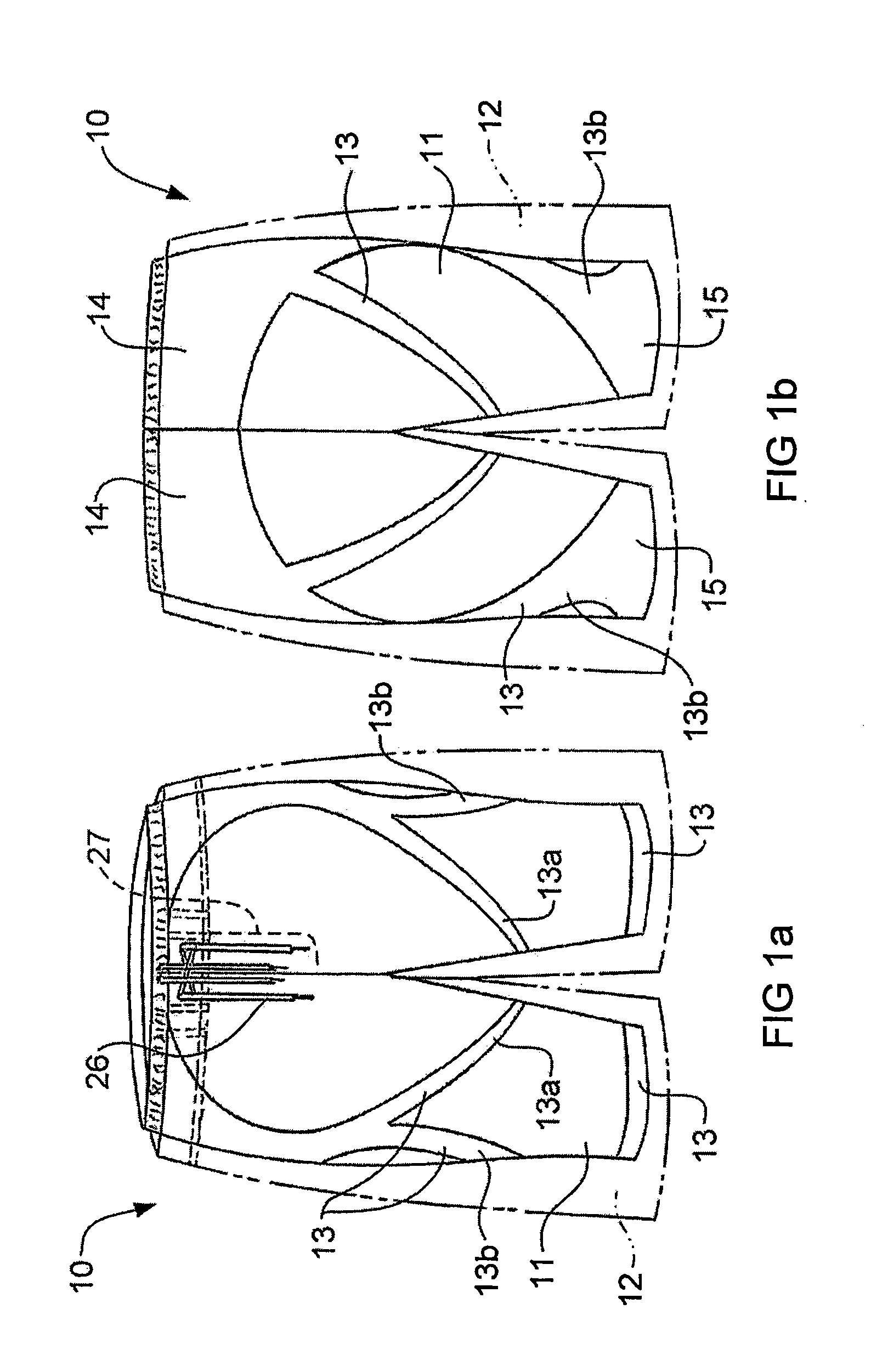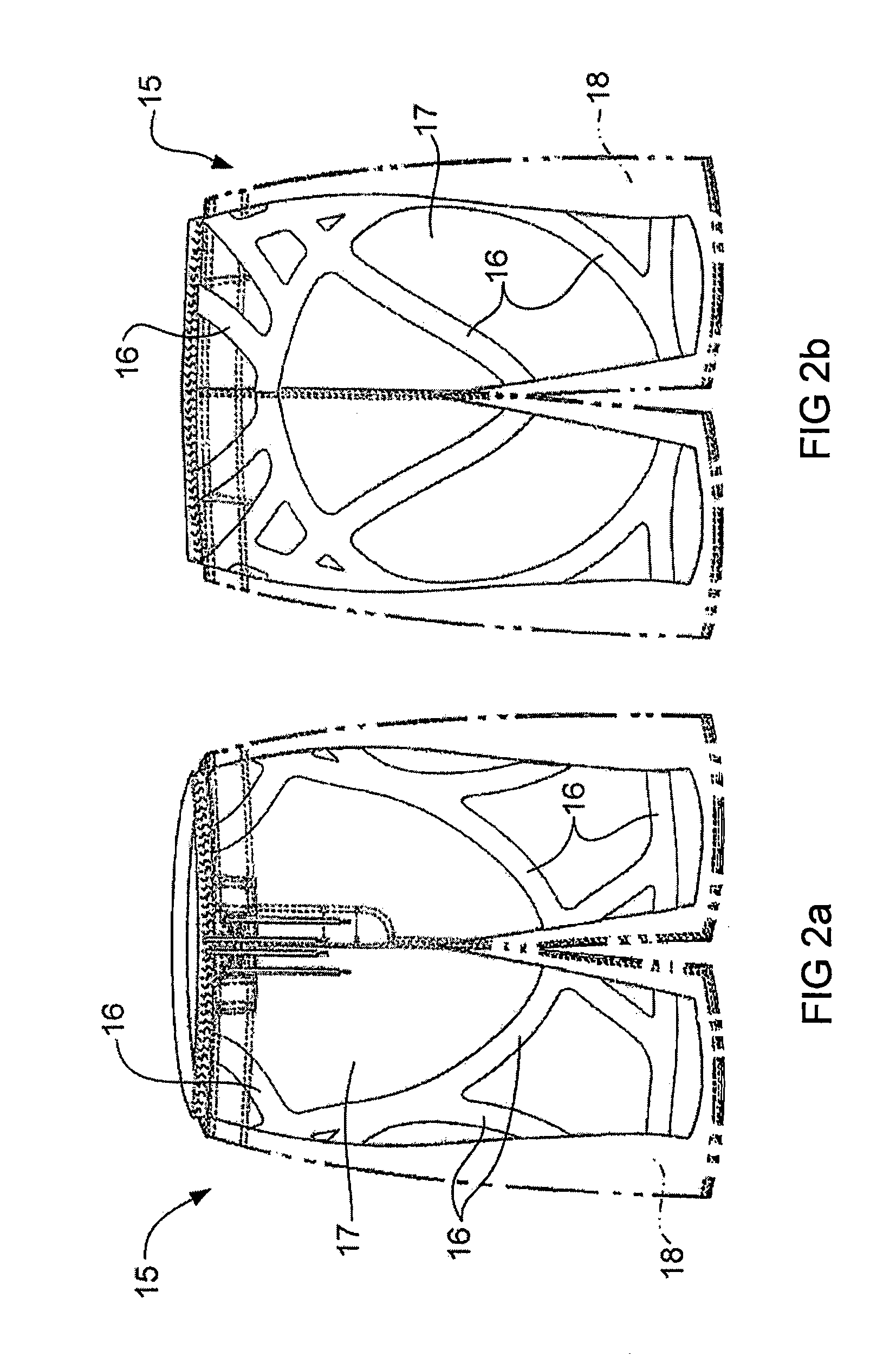Technical garment
- Summary
- Abstract
- Description
- Claims
- Application Information
AI Technical Summary
Benefits of technology
Problems solved by technology
Method used
Image
Examples
Embodiment Construction
[0054]Referring first to FIG. 1, front and rear illustrations of a technical pant garment 10 (hereinafter “boardshort 10”) in accordance with one embodiment of the invention are shown.
[0055]The boardshort 10 comprises an inner short 11 and an outer short 12. The inner short 12 is intended to fit tightly about the waist and thighs of a person wearing the boardshort 10, while the inner short 11 is intended to extend from the waist region of a wearer to a region just at, above or below the wearer's knees. The inner short 11 can be made of an elastic material such as LYCRA® or like material, and it can also be a compression material to impart the benefits of muscle compression as previously described. Alternatively, the inner short 11 can be formed of an inelastic material.
[0056]The outer short 12 can be formed in any suitable manner and can be made of materials that are commonly used in boardshort manufacture already. Accordingly, the outer short 12 can be formed of substantially water...
PUM
 Login to View More
Login to View More Abstract
Description
Claims
Application Information
 Login to View More
Login to View More - R&D
- Intellectual Property
- Life Sciences
- Materials
- Tech Scout
- Unparalleled Data Quality
- Higher Quality Content
- 60% Fewer Hallucinations
Browse by: Latest US Patents, China's latest patents, Technical Efficacy Thesaurus, Application Domain, Technology Topic, Popular Technical Reports.
© 2025 PatSnap. All rights reserved.Legal|Privacy policy|Modern Slavery Act Transparency Statement|Sitemap|About US| Contact US: help@patsnap.com



